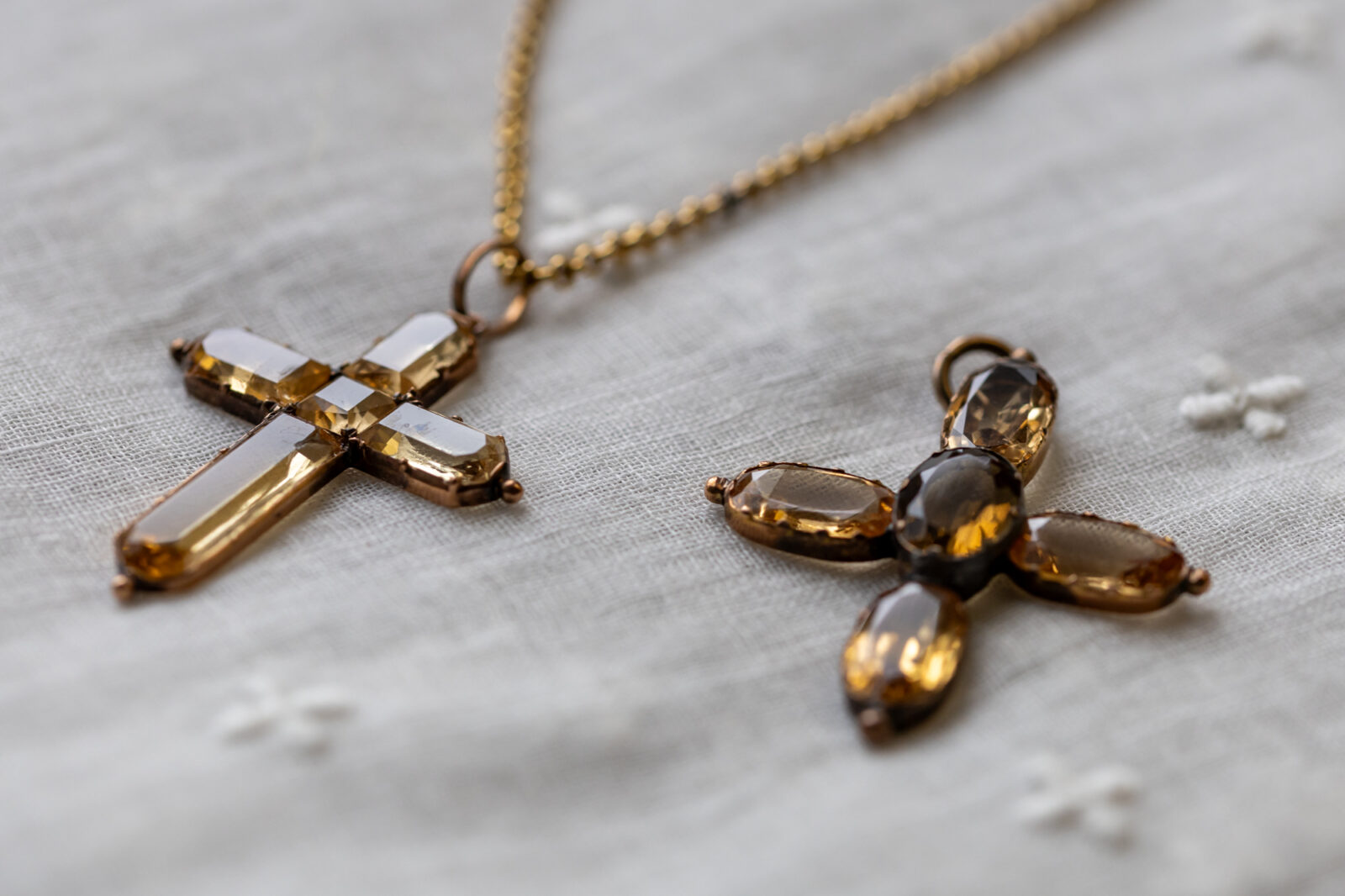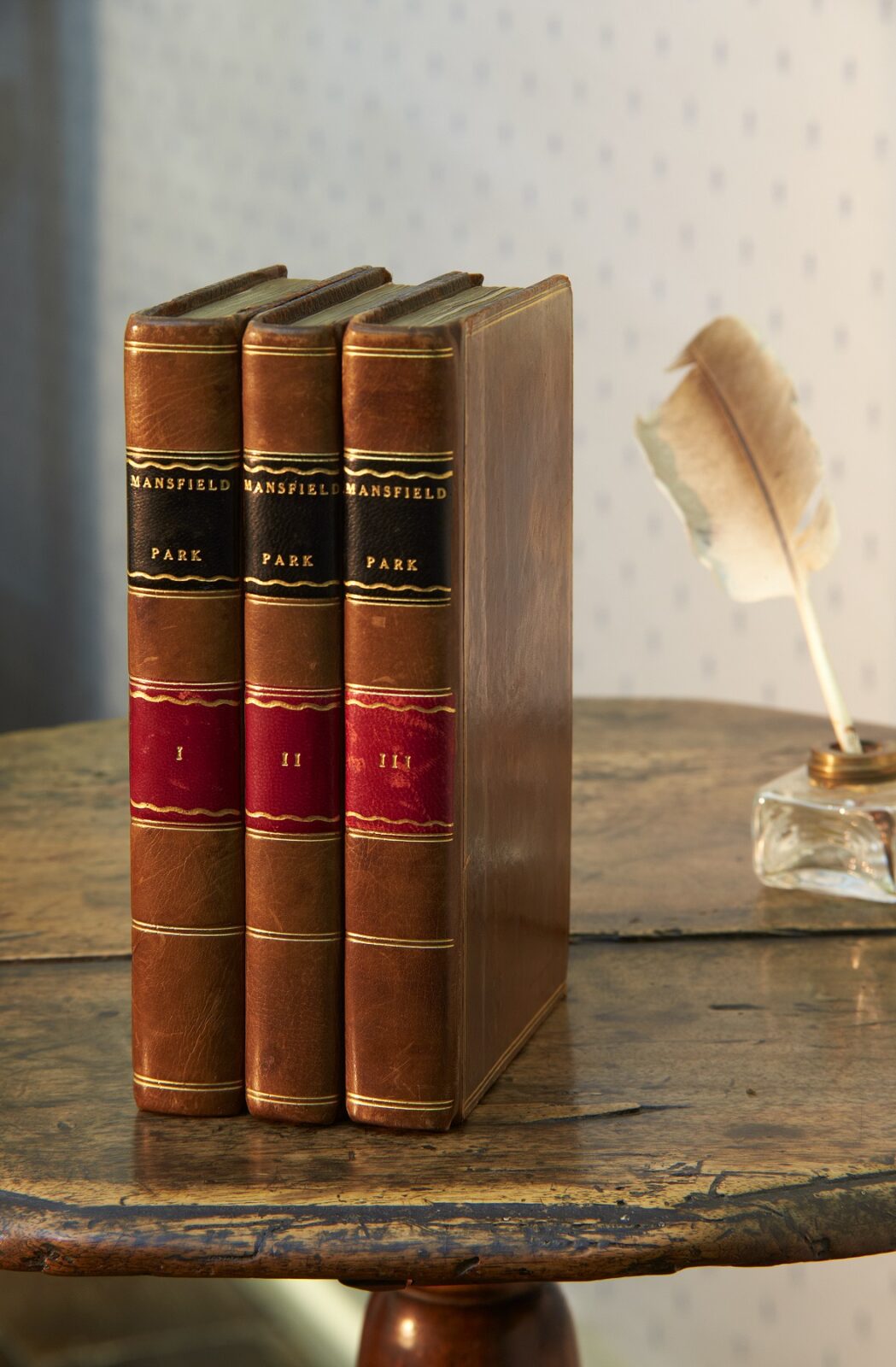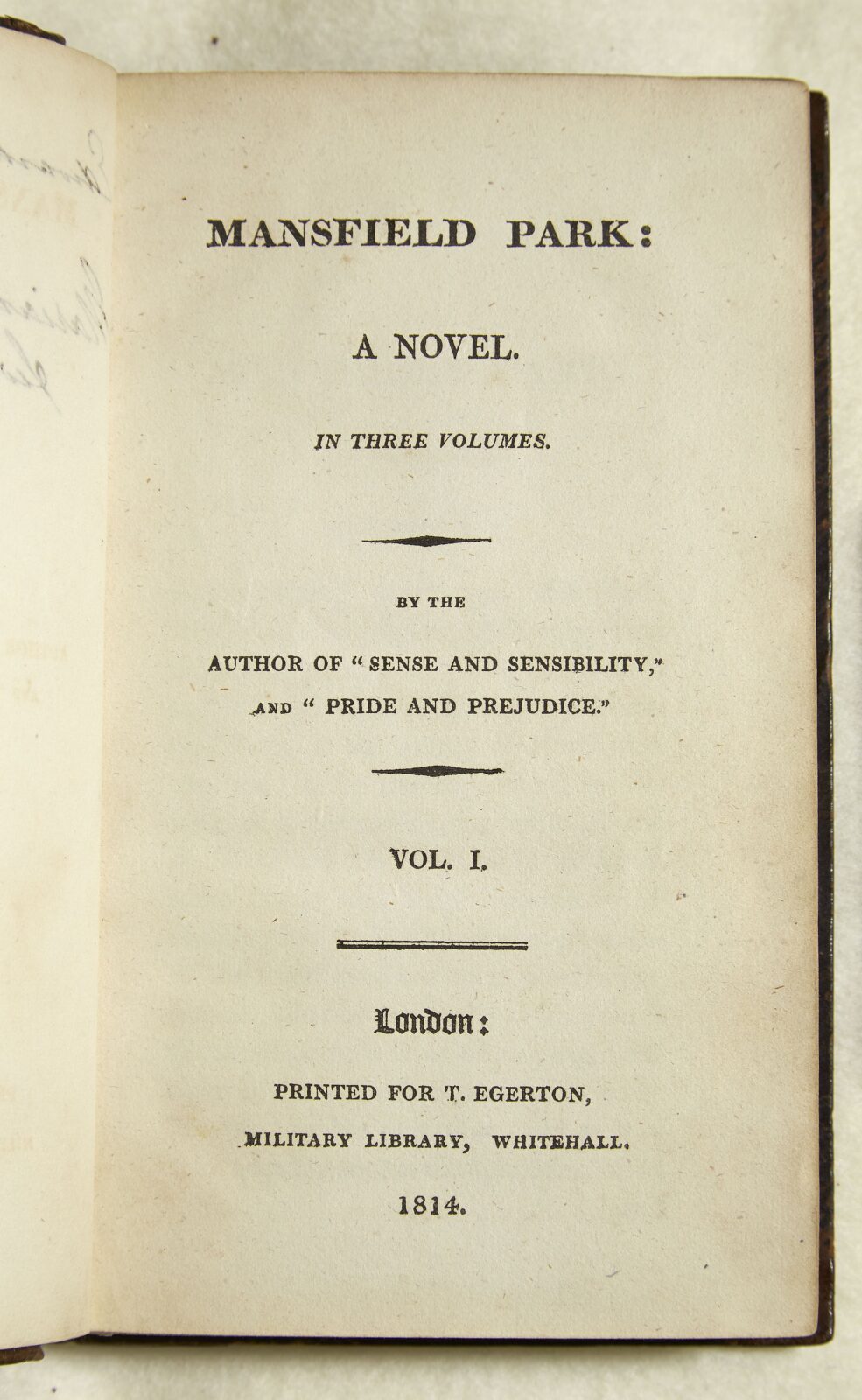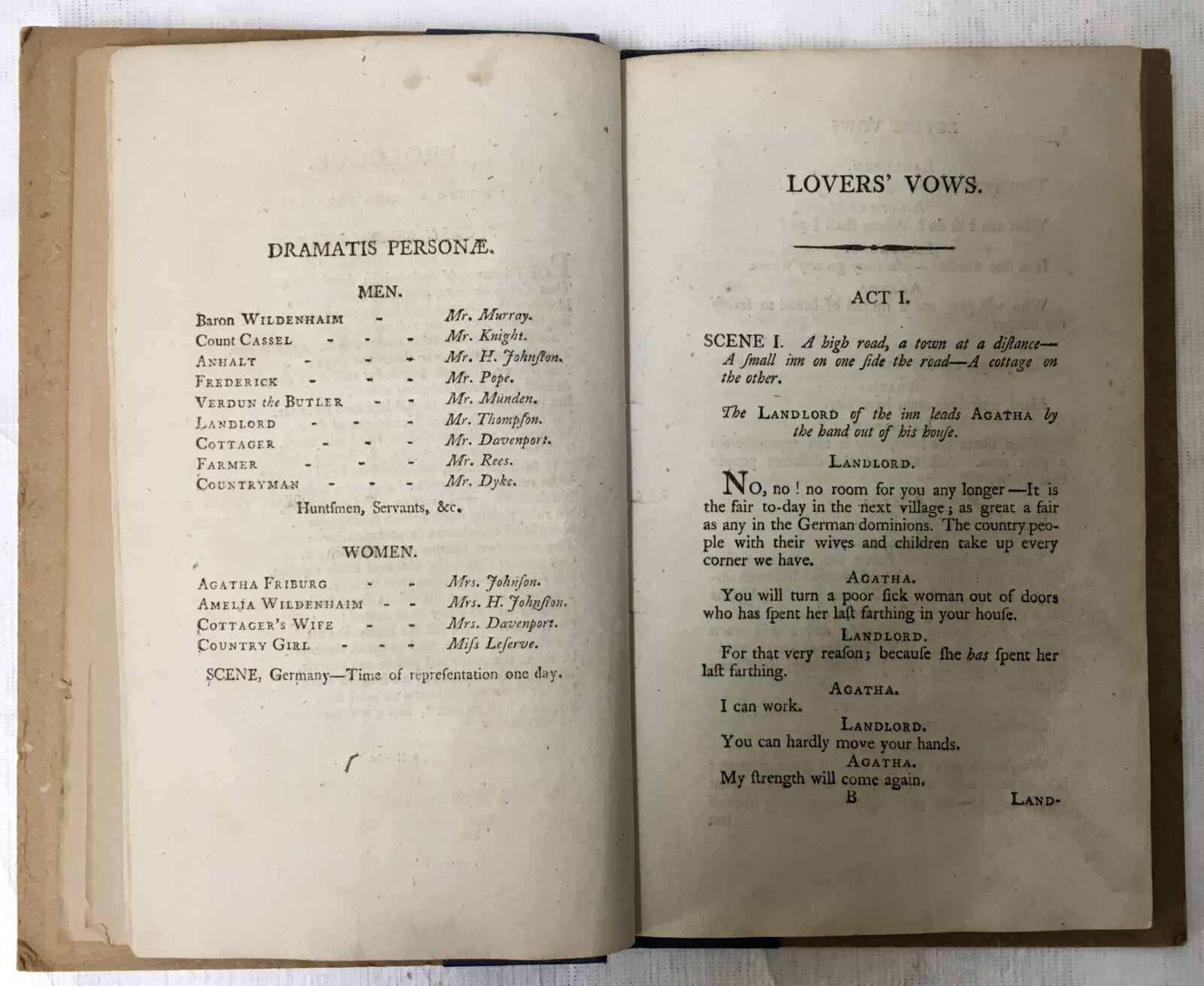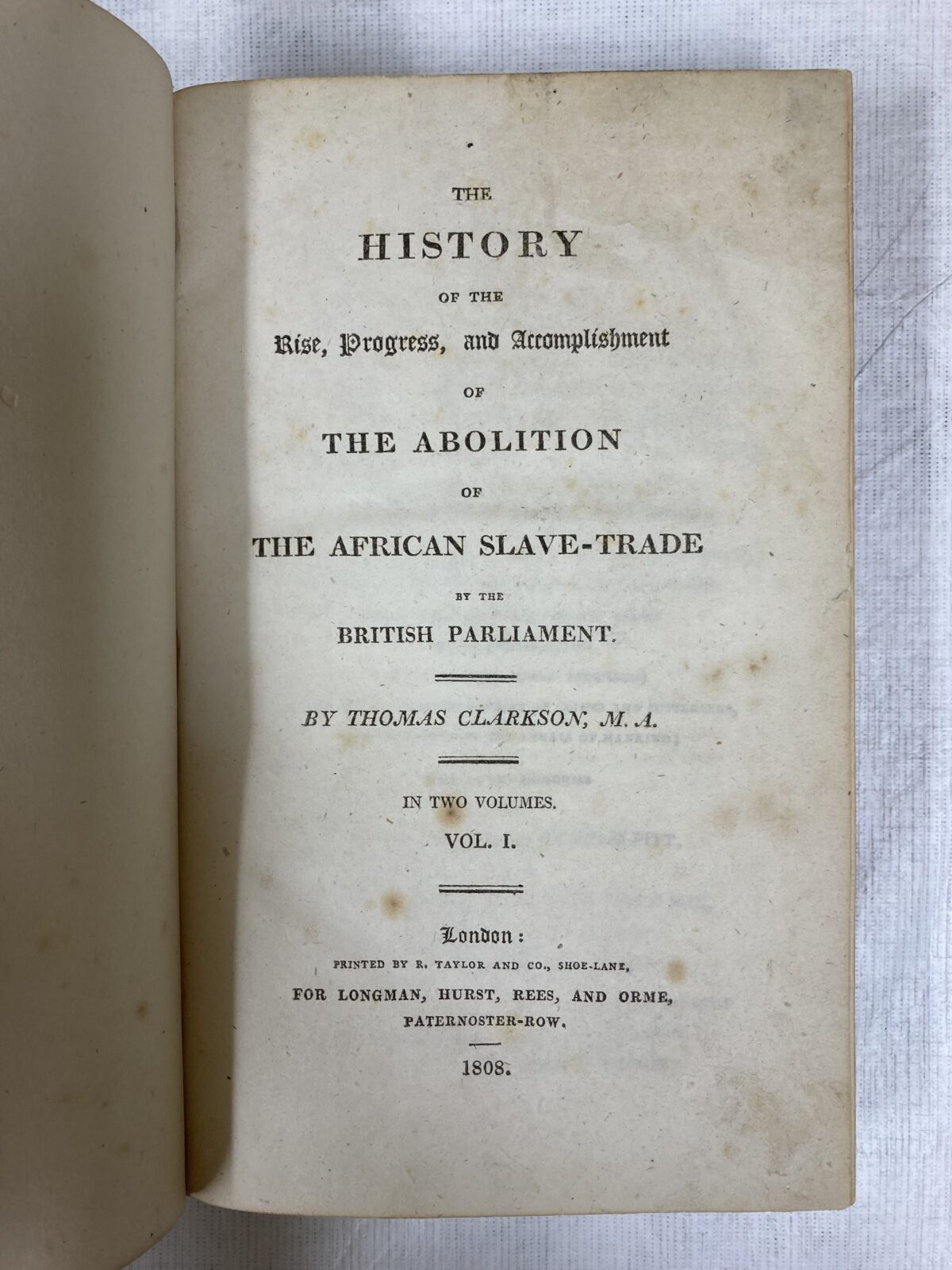Room 4: Three Books and a Letter
Mansfield Park by Jane Austen
Published by T. Egerton, London, 1814. First edition
First editions of Mansfield Park are extremely rare, but this set is particularly special. It belonged to Edward Austen Knight, Jane’s brother. Although Edward admired Fanny Price as a character, his teenage sons were not so sure. Jane noted that ‘George disliked [Fanny]’ and was ‘interested by nobody but Mary Crawford’. Similarly, his brother Edward was ‘pleased with Henry Crawford’ but thought Edmund too ‘cold & formal.’
Lovers’ Vows by Elizabeth Inchbald
Published by G. G. and J. Robinson, London, 1798. First edition
Just as the Austen family loved acting out plays for their own entertainment, the young people of Mansfield Park try to stage a private play in Sir Thomas’s absence. They choose Lovers’ Vows, a play considered very shocking at the time because it involved a son born outside of marriage and featured a ‘rake’ character who defends extra-marital sex. They know that Sir Thomas would disapprove of such a play but choose it because it gives them a socially-acceptable excuse to make flirtatious speeches to each other.
The history of the rise, progress, and accomplishment of the abolition of the African Slave-trade by the British parliament by Thomas Clarkson.
Published by Longman, Hurst, Rees, & Orme, London, 1808. First edition
Thomas Clarkson was a key figure in the abolitionist movement and campaigned tirelessly for the freedom of enslaved workers. Jane Austen hugely respected his writings and Mansfield Park shares many key themes with Clarkson’s History.
The villainous Mrs Norris in Mansfield Park may even have been named after a historic figure that Clarkson featured in the book, a real-life slave-trader named Mr John Norris. Jane admired Clarkson so much that she even joked to her sister that she was in love with him.
Letter from Jane Austen to Cassandra Austen, 24 January 1813
Jane Austen was a keen observer of life around her and often took inspiration from the things that she saw and learnt for use in her novels. This letter from 1813, when she was writing Mansfield Park, contains examples of the influences contained in her writing. For instance, she mentions attending a card party with the same number of people to play cards ‘as there were at Mrs Grants’. Then, after reading a travel book, she mentions having to change a reference to the embassy in Gibraltar as ‘there is no government House at Gibraltar.’ Jane’s letter also repeats how much she loved the writing of the abolitionist Thomas Clarkson, whose History of the Abolition of the Slave Trade is displayed above.
